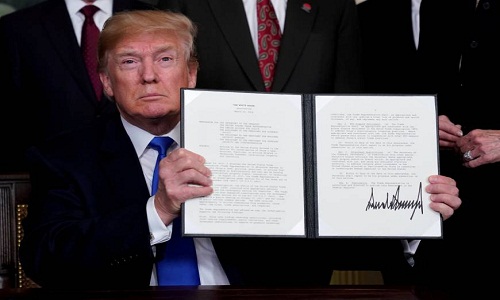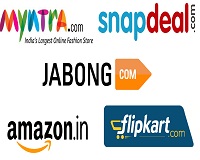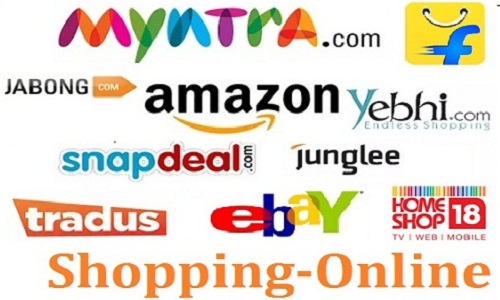FW
While Yarn Expo has long been the leading choice for fabrics manufacturers for sourcing, in recent editions it has attracted more brand buyers as well. As the fashion industry has evolved in recent years, so too has Yarn Expo’s position and importance in the market. Fashion brands are more experienced nowadays in terms of yarn and fiber selection, and are having more impact on the look and function of the fabrics, which is flowing through to the final outcome of the garment. The need for brands to stay ahead of the latest fashion trends and textile innovations in such a competitive environment makes it vital they can source at a comprehensive event with innovative and quality suppliers, which has propelled Yarn Expo to become one of the most influential fairs on the textile calendar.
Another trend noticed at Yarn Expo is the strong demand for emerging products such as fancy and specialty yarns and synthetic fibers. Last year’s autumn edition saw 55 per cent more buyers sourcing fancy yarns compared to 2016, 40 per cent more for specialty yarns and over 30 per cent for synthetic fibers.
This growth is also reflected in the number of trade buyers choosing Yarn Expo as their sourcing platform in recent years: from 7,375 in the 2015 autumn edition to 17,185 from 84 countries and regions last year.
Twice a year, Première Vision, the international leader of professional shows for fashion materials and services, organises an exclusive new event dedicated to the first launch of collections. Initiated in July 2016, Blossom Première Vision is targeted towards creative, luxury and high-end fashion brands.
The 5th edition, Blossom Première Vision for Autumn Winter 2019-’20 pre-collections will be held on July 4 and 5, at the Carreau du Temple in Paris. It will feature over 105 exhibitors. These will include about 63 weavers such as lace-makers, embroiderers, specialists in ultra-fantasy, jacket and coat weights, shirts and tailoring; knitwear specialists, experts in creative and fashionable technical fabrics, silk makers, sophisticated print technicians and embellishment specialists.
The event will also feature around five accessories manufacturers and component suppliers for clothing, jewellery, and leather goods; specialists in textile accessories or metallic elements buttons, zips and labels. About 20 tanners for the fashion and leather goods markets: calfskin, lambskin, kid leather, exotic leathers, etc will also be present.
API and ICM have announced joint development in innovative and sustainable technical fabrics. The joint development facilitates the design, manufacture and marketing of high-performance and environmentally sustainable textile solutions for the fashion and footwear industries.
Italian company API, specializes in the production of thermoplastic elastomeric compounds and bioplastics. ICM is a key player in footwear and leather goods industry. It produces solvent borne and water borne adhesives, toe puffs, counters and interlinings for leather goods. Since 2015 the company has focused on developing films and TPU plates.
The development’s textile products will be produced in a solvent-free and plasticiser-free manufacturing process. Joining forces with ICM enables API to accelerate technical innovation, time to market and reduce its product’s environmental footprint. For ICM the partnership enables it to pair decades of technical knowledge in the plastics, leather goods and footwear industry.
ICM and API will provide the first glimpse of their new textile solutions at the 2018 Pitti Immagine Uomo international fashion fair in Italy, June 12 to 15. A selection of VIP press members and buyers at the trade fair will receive an exclusive shopping bag made of the partnership’s new fabrics. The bag’s design was inspired by this year’s event theme – P.O.P. Pitti Optical Power, a visual and virtual celebration, presenting a pop vision and full color graphic world.
Clean Clothes Campaign (CCC) has urged sportswear giants Adidas and Nike -- two main sponsors of the upcoming World Cup -- to ensure workers in their Asian supplier factories are paid a fair wage as their share of the production cost dwindles. The share of production costs of Adidas and Nike shoes that end up in workers’ pockets has fallen by 30 per cent since the 1990s.
Adidas and Nike, which are sponsoring 22 of 32 teams at FIFA football tournament in Russia that kicks off this week, have moved most of their sourcing to Indonesia, Cambodia and Vietnam, where wages are lower and labour abuses rife. In the three nations, garment workers’ average salaries are 45 to 65 per cent below the so-called “living wage” that would allow them to cover their families’ basic needs.
Much of Adidas’ and Nike’s sportswear is made in Indonesia, where 80 per cent of workers in the garment sector are women and some make as little as €86 ($102) a month while others do not earn the legal minimum wage, according to the CCC’s report.
"With the Trump administration imposing tariffs on a host of foreign-made goods, US trade scenario is becoming challenging day by day. Earlier it was China, and now it’s Canada’s turn to replicate it as the Trump government has imposed steel and aluminum tariffs on the European Union, Canada, and Mexico. Canadian Prime Minister Justin Trudeau deemed the tariffs an affront to the long-standing security partnership between Canada and the United States, while French President Emmanuel Macron was warned that Trump’s action was illegal and creating economic nationalism."
 With the Trump administration imposing tariffs on a host of foreign-made goods, US trade scenario is becoming challenging day by day. Earlier it was China, and now it’s Canada’s turn to replicate it as the Trump government has imposed steel and aluminum tariffs on the European Union, Canada, and Mexico. Canadian Prime Minister Justin Trudeau deemed the tariffs an affront to the long-standing security partnership between Canada and the United States, while French President Emmanuel Macron was warned that Trump’s action was illegal and creating economic nationalism.
With the Trump administration imposing tariffs on a host of foreign-made goods, US trade scenario is becoming challenging day by day. Earlier it was China, and now it’s Canada’s turn to replicate it as the Trump government has imposed steel and aluminum tariffs on the European Union, Canada, and Mexico. Canadian Prime Minister Justin Trudeau deemed the tariffs an affront to the long-standing security partnership between Canada and the United States, while French President Emmanuel Macron was warned that Trump’s action was illegal and creating economic nationalism.
Shaking up global trade dynamics
Going by the prevailing situation, Trump has stirred the entire trade dynamics in the country and that too in a negative way. Stats reveal, close to $3 trillion foreign goods & services Americans buy every year. The EU, Canada, and Mexico have all retaliated against Trump’s metal tariffs by slapping duties on the US products ranging from cheese to motorcycles. A trade collapse between the two biggest economies – the US and China – in the world would completely disturb the global economy. Add to that, a tiff between close partners Germany, France, and Canada would cause more danger than good to the US economy.
negative way. Stats reveal, close to $3 trillion foreign goods & services Americans buy every year. The EU, Canada, and Mexico have all retaliated against Trump’s metal tariffs by slapping duties on the US products ranging from cheese to motorcycles. A trade collapse between the two biggest economies – the US and China – in the world would completely disturb the global economy. Add to that, a tiff between close partners Germany, France, and Canada would cause more danger than good to the US economy.
By doing this, Trump administration claims they want to make trade fair and stop the rest of the world from taking advantage of the US and hurting American industry. As a matter of fact, some countries have been less open to foreign investment than the US and at times imposed higher tariffs or other barriers on American imports than the US does on its products. China has been an especially poor trading partner—pilfering US technology, blocking market access for US companies, and heavily subsidising competing industries. Because of this, cheaper imports have forced thousands of US factories to close over the past 20 years.
As far as the North American Free Trade Agreement (NAFTA) renegotiation goes, one of the main sticking points is over a proposal to factor labour cost differentials into trade in automobiles. Adopting it would force Mexico to hike wages in its auto manufacturing sector by as much as five times or suffer extra duties on its car exports—effectively depriving the country of its comparative advantage. The idea is to push factories out of Mexico and into the US. In such a scenario, Trump may now favour negotiating bilateral deals with Canada and Mexico.
Experts say, in all of these, Trump seems to be arm-twisting trading partners for concessions to aid and protect a small number of industries—steel, automobiles, agriculture, and energy. Trump wants to hike tariffs on imported cars in the name of ‘national security’, a transparent attempt to force automakers to manufacture more cars inside the US. Analysts believe that his trade policies aren’t about ‘fair’ trade, rather about solidifying his political base and rewarding his supporters. Jörg Wuttke, a former president of the EU Chamber of Commerce in China, stated that Trump is badgering the Chinese state to intervene to redirect customer-determined flows of trade toward the US and away from other countries—including close allies.
In doing so, the US is becoming isolated from its own partner countries. At a recent meeting of G-7 finance ministers, the other six ganged up on Mnuchin over Trump’s tariffs and demanded collective cooperation on resolving trade issues. It was the US against everyone else, said Japanese Finance Minister Taro Aso. Trump had a chance to team up with allies in Europe and Asia to pressure China to change its trade practices. Without the US support, the entire global order, which has produced so much growth and wealth over the past 70 years, could be quite dramatic, making way for dominant China and a diminished US.
"The Hong Kong Trade Development Council has published a research on India’s growing e-commerce consumerism. As per the report, India is considered a difficult market to do business, despite substantial improvement in the ease of doing business in recent years. In the World Bank’s Doing Business 2018 report, India jumped up 30 places from the year ago in international rankings measuring the ease of doing business, making it into the top 100 for the first time."
 The Hong Kong Trade Development Council has published a research on India’s growing e-commerce consumerism. As per the report, India is considered a difficult market to do business, despite substantial improvement in the ease of doing business in recent years. In the World Bank’s Doing Business 2018 report, India jumped up 30 places from the year ago in international rankings measuring the ease of doing business, making it into the top 100 for the first time.
The Hong Kong Trade Development Council has published a research on India’s growing e-commerce consumerism. As per the report, India is considered a difficult market to do business, despite substantial improvement in the ease of doing business in recent years. In the World Bank’s Doing Business 2018 report, India jumped up 30 places from the year ago in international rankings measuring the ease of doing business, making it into the top 100 for the first time.
India’s growing e-com strength
From a much lower and later starting point than China, India has staged a sustained e-commerce boom. At the same time, the government has cautiously opened up retail and e-commerce sectors to FDI. Given these factors, and notwithstanding the existing retail FDI restrictions and entry barriers, India presents plenty of business opportunities to Hong Kong companies that are prepared to tap into the country’s booming e-commerce market, by jumping on the online sales bandwagon and/or leveraging the online platforms that are emerging there.
same time, the government has cautiously opened up retail and e-commerce sectors to FDI. Given these factors, and notwithstanding the existing retail FDI restrictions and entry barriers, India presents plenty of business opportunities to Hong Kong companies that are prepared to tap into the country’s booming e-commerce market, by jumping on the online sales bandwagon and/or leveraging the online platforms that are emerging there.
While India’s e-commerce sales was only $30 billion in 2017 – just 6.7 per cent of China’s total and 11.2 per cent of that of the US – the country’s e-tailing market growth is expected to outstrip both China and the US in the next five years. China is the world’s largest e-commerce market, its growth boosted by a fast improving broadband infrastructure, increasingly affordable mobile devices, and a myriad of innovative services linked particularly to smartphone applications. The average annual growth rate of China’s e-commerce market for 2012-17 was 46.2 per cent. While such growth was truly remarkable, it actually fell short of India’s average annual growth of 59 per cent in the same period. From 2017-22, the difference in average annual growth rates is likely to continue to move in India’s favour, with China’s e-commerce sales expected to expand annually by 12 per cent, only half of the growth forecast for India’s.
While India’s population is a similar in size to China, its 2017 per capita income of $1,852 was less than one-quarter of China’s, according to the IMF. The differences between the two countries in terms of e-commerce development and purchasing power mean that the per capita e-commerce spend in India is much lower than in China, amounting to $23 in 2017 (just 7per cent of China’s figure). The ratio of per capita spend in India to that of China, however, is expected to improve slightly to more than 11per cent by 2022. Despite the e-commerce euphoria of the past few years and the market growth expected in the next few, Indian consumers will continue to be extremely price-sensitive. Whether purchasing online or elsewhere, the majority of them may not be able or willing to afford pricier, imported international lifestyle brands and high-end products, particularly products boasting top-of-the-range features and functionalities.
Cross-border e-com opportunities for Hong Kong
Hong Kong companies eyeing India’s retail market potential, particularly that of the super-charged e-commerce segment, should have a clear understanding of how cross- border e-commerce could be adopted in practice. Any FDI-invested SBRT operation in India is subject to a 30 per cent local sourcing requirement, but also has the added option of operating an associated single-brand B2C website. However, any foreign company failing to register in India and/or source locally will not be permitted to operate a single brand B2C e-commerce website in the country.
Indian consumers browse and shop from overseas or non-Indian B2C e-commerce websites, and it may be practically difficult to require those non-Indian websites to observe the 30 per cent local sourcing requirement. However, overseas B2C websites that are committed to selling to India need to effectively reach out to Indian consumers with marketing campaigns and promotional activity, and they will be better off staying close to the market with their local SBRT setup. Hong Kong companies keen to sell to India via a local presence may find it a practical step in making contact with Indian consumers.
Successful e-commerce operators have adopted both online and offline marketing initiatives to boost online sales. It is difficult to orchestrate an overall sales and marketing strategy without securing a local business identity in India, and a further difficulty to overcome is the local sourcing requirements imposed by the regulatory authorities. That said, Hong Kong companies interested in selling to India may be able to identify a third party in India with a registered business entity to help facilitate selling, in order to avoid incurring heavy capital commitment upfront.
The Clean Clothes Campaign and Éthique sur l’étiquette are calling on Nike and Adidas, as well as all sportswear brands to create a time-bound roadmap with targets to guarantee the payment of a living wage, earned in a standard working week, adopt more responsible purchasing practices to enable the payment of living wages and publish the actual monthly wages of the workers in its supplier factories as well as the results of their supplies social audits.
With the football World Cup set to kick off, sportswear giants Nike and Adidas gear up to go head for the title of the World’s biggest football-apparel brand. Sponsoring a total of 22 out of the 32 football teams competing for the title, the World Cup is the main stage for Nike and Adidas growing competition for sponsorship and branding. However, while millions of people around the globe are getting ready to cheer on their favourite team during the event, it was revealed that while Nike and Adidas pay record-break amounts to footballers, they do not pay living wages to the female garment workers making their shirts.
Nike and Adidas generate sufficient revenue to be able to pay living wages across their supply chains, but chose to prioritise other areas, such as marketing and sponsorships.
At least 10 companies will participate in the South Africa Trade Show that will be held by ZimTrade in South Africa this month.
These companies will span various sectors such as clothing, textile, and leather.
The expo will be organised in Lubumbashi and is expected to open new market opportunities for local products in the Democratic Republic of Congo following a market survey conducted by ZimTrade in October 2016.
Source Africa Trade promotes African made apparel, textiles and footwear stimulate interaction on a regional and international level.
The event also accelerates investment into the region besides ensuring sustainable job creation within the sector. Zimbabwean companies will showcase pinch valves, mining roof support elements, rail track accessories, beaters, and crucibles, among other products.
The Ministry of Industry will support the Indonesian Fashion Designers Entrepreneurs Association (APPMI) to implement the Modest Fashion Project (MOFP) 2018.
The project is expected to stimulate young domestic designers to build startup in the national Muslim fashion industry. In addition, the design of the winners will be reproduced and marketed widely to improve the national economy.
In order to encourage young designers, Ministry of Industry has been running the program peningkatan competence of human data sources. In addition, it strengthens the structure of the national fashion industry.
In recent years, the fashion industry in the country has continued to show positive growth. This is indicated by an increase in export value performance and its contribution to national GDP.
Based on data from BPS, the value of national fashion exports in the period January-April 2018 reached USD 4.7 billion, an increase of 10 percent over the same period in 2017 of USD 4.2 billion.
Wool activewear is emerging as the most preferred material with many athleisure companies such as Adidas and Lululemon due to its inherent properties such as softness and odour-resistant capabilities.
This trend was particularly evident at the recent ISPO trade fair in Munich.
Norwegian brand Devold won an ISPO Award 2018 for its Tuvegga Sport Air base layer. The reversible two-sided functional base layer is designed for high-performance activities and is made from 100 per cent Merino wool.
At the event, the Woolmark Company displayed products like wool footwear, seamless apparel and wool filling. While many outdoor brands already have wool in their collections, increasing number of brands are introducing wool into their high-intensity categories.
The Greater Than A, the sportswear brand of Norwegian alpine ski racer Aksel Lund Svindal, an Olympic gold medallist, also uses wool in his sportswear brand. The brand aims to make functional clothing that looks and feels fantastic and at the same time causes no harm to the planet.
Aksel uses wool for training and has a race suit designed for aerodynamics. The trick is to get changed as soon as one can in the finish area.












